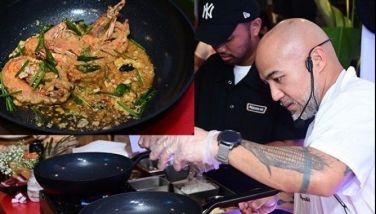Multisectoral coalition sounds alarm over fake medicine
MANILA, Philippines - A coalition of doctors, pharmacists, drug regulators and distributors is sounding the alarm on the proliferation of fake medicines.
Describing counterfeiting of medicines as a “perfect crime,” the Samahan Laban sa Pekeng Gamot (Samahan) warned that based on Health department figures, 10 percent or one of every 10 medicines in the Philippines is fake.
“Consumers unwittingly buy from drugstores with counterfeit medicines. If that patient dies, no one will be going to report anymore because the patient is already dead,” said Dr. Maria Minerva Calimag, Samahan spokesman and chair of the Cosmetics Committee of the Philippine Medical Association (PMA).
Calimag said fake medicines should be flushed out immediately from market.
She said the true extent of the counterfeiting problem is “hidden” and that the 10-percent estimate is based only on reported cases to the Food and Drugs Administration.
“From the point of view of the PMA, we strongly recommend that we buy only from Food and Drugs Administration- listed pharmacy. Source is important. As doctors we do our diagnosis, and then we depend on medicines to work,” she added.
Samahan raised the warning against fake drugs as the nation celebrates this month the “National Consciousness Week against Fake Medicines” as mandated under Presidential Proclamation No. 2082.
The Food and Drugs Administration, the Philippine Medical Association, the Philippine Pharmacists Association (PPA) and the Drug Stores Association of the Philippines, among others, comprise Samahan.
In its website, Samahan said the international sources of fake medicines are China, India and Pakistan. The local sources are in Manila, Cebu, Aurora, Bataan, Bulacan, Nueva Ecija, Pampanga, Tarlac, Zambales, Batangas, Cavite, Laguna, Rizal and Quezon.
The country’s pharmaceutical industry is a P112 billion business.
PPA president Leonila Ocampo said “the business from counterfeit medicines will go to as high as $75 billion” worldwide.
“The proliferation of fake medicines in Asia is quite high. We really take this seriously as our advocacy in as much as pharmacists we all know are the very people who can get their medicines very easily,” Ocampo said.
To detect counterfeits, Calimag has advised consumers to “first carefully check the label on the medicine and in the packaging to avoid purchasing the fake ones.”
“Check the color, the texture, and if possible, the taste of the medicine. Beware also if the packaging is different and if the price is significantly or unusually low,” she said. “It is equally critical to buy only from FDA-licensed pharmacy,” she added.
Calimag said fake medicines are hazardous to health because they “are neither tested nor approved, may contain toxic, unlisted and substandard ingredients.”
Counterfeit products pertain to those sold under established product name without proper authorization, or those with insufficient, excess, or wrong active ingredients.
- Latest
- Trending
































